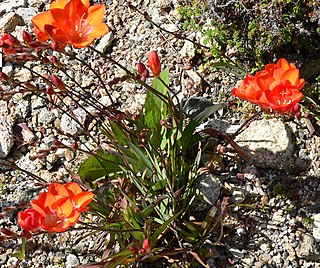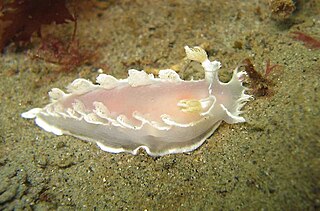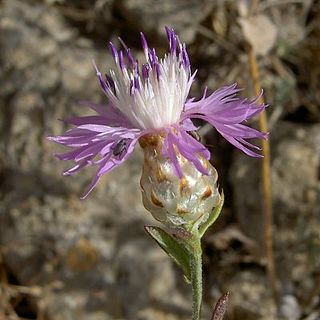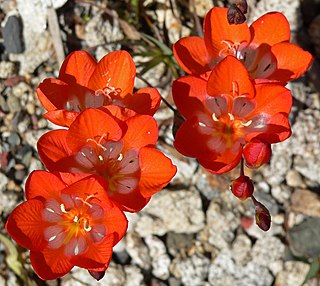
Freesia is a genus of herbaceous perennial flowering plants in the family Iridaceae, first described as a genus in 1866 by Christian Friedrich Ecklon (1886) and named after the German botanist and medical practitioner, Friedrich Freese (1795-1876). It is native to the eastern side of southern Africa, from Kenya south to South Africa, most species being found in Cape Provinces. Species of the former genus Anomatheca are now included in Freesia. The plants commonly known as "freesias", with fragrant funnel-shaped flowers, are cultivated hybrids of a number of Freesia species. Some other species are also grown as ornamental plants.

Iridaceae is a family of plants in order Asparagales, taking its name from the irises. It has a nearly global distribution, with 69 accepted genera with a total of c. 2500 species. It includes a number of economically important cultivated plants, such as species of Freesia, Gladiolus, and Crocus, as well as the crop saffron.

Crocosmia (;), also known as montbretia, is a small genus of flowering plants in the iris family, Iridaceae. It is native to the grasslands of southern and eastern Africa, ranging from South Africa to Sudan. One species is endemic to Madagascar.

Tritonia is a genus of flowering plants in the iris family first described as a genus in 1802. They are naturally distributed across southern Africa, with a high concentration of species in Cape Province of western South Africa. The genus is closely related to the genus Ixia.

Kretzschmaria deusta, commonly known as brittle cinder, is a fungus and plant pathogen found in temperate regions of the Northern Hemisphere on broad-leaved trees, also found in Argentina, South Africa, and Australia.

Elegia is a genus of grass-like plants in the family Restionaceae endemic to Cape Province in South Africa. Some species are grown as ornamentals in gardens.

Tritoniidae is a taxonomic family of nudibranchs in the suborder Cladobranchia, shell-less marine gastropod molluscs. This family includes some of the largest known nudibranchs, with the NE Atlantic species Tritonia hombergii reaching 20 cm in length. It is the only family in the monotypic superfamily Tritonioidea.

Crocoideae is one of the major subfamilies in the family Iridaceae.

Tritonia is a genus of sea slugs, nudibranchs, shell-less marine gastropod molluscs in the family Tritoniidae.
Zygotritonia is a genus of herbaceous, perennial and bulbous plants in the family Iridaceae. It contains four species distributed throughout sub-Saharan Africa. The genus name is derived from the word zygomorphic, and the apparent resemblance to some species in the genus Tritonia.

Tritoniopsis is a genus of flowering plants in the family Iridaceae, first described as a genus in 1926. The entire genus is endemic to Cape Province in South Africa. The genus name refers to the African genus Tritonia and is combined with the Greek word opsis, meaning "look-alike".

Duvaucelia odhneri, is a species of dendronotid nudibranch. It is a marine gastropod mollusc in the family Tritoniidae.

Hesperilla donnysa, also known as the donnysa skipper or varied sedge skipper, is a species of butterfly in the family Hesperiidae. It is found in the Australian Capital Territory, New South Wales, Queensland, South Australia, Tasmania, Victoria and Western Australia.

Miriam Phoebe de Vos was a leading South African botanist and academic. She was an expert on bulbous plants, especially Romulea. She also had a special interest in Moraea and Clivia.

Centaurea alba is a species of Centaurea found in the Iberian Peninsula in southern and central Spain and in a small neighbouring area in the interior of Portugal. There are three recognised subspecies, and of one subspecies, the nominate, there are furthermore three varieties.

Tritonia crocata is a plant species in the family Iridaceae.

Joseph William "Jimmy" Mathews was a horticulturist and gardener from England who served as the first curator of the Kirstenbosch national botanical garden in Cape Town, South Africa.

Ptilothrix deusta is a sedge in the family Cyperaceae found in south eastern Australia. It is commonly seen in wet sandy soils in heathland, growing from 30 to 60 cm tall. This is one of the many plants first published by Robert Brown with the type known as "(J.) v.v." appearing in his Prodromus Florae Novae Hollandiae et Insulae Van Diemen in 1810 as Carpha deusta. It was transferred to the genus, Ptilothrix, in 1994 by Karen Wilson. The genus name is derived from ancient Greek, meaning feather hair. The specific epithet deusta is derived from the Latin with a meaning of burnt.
















